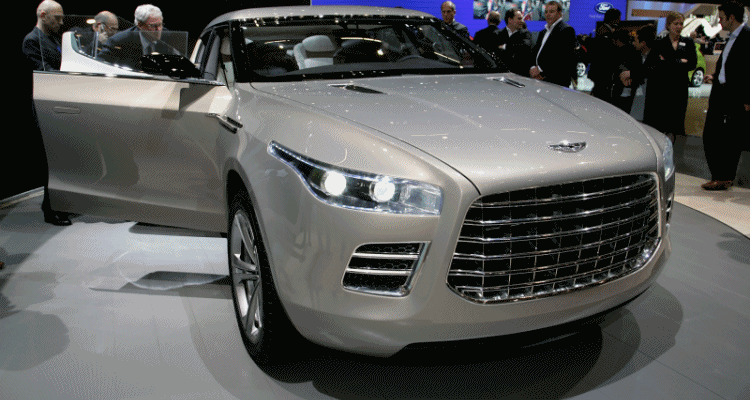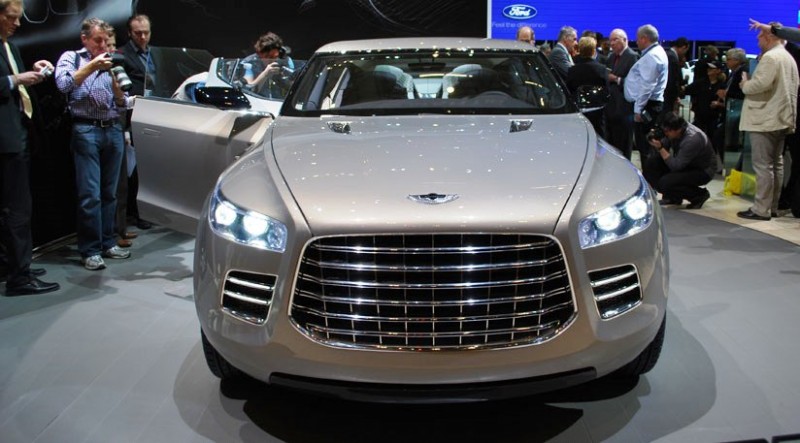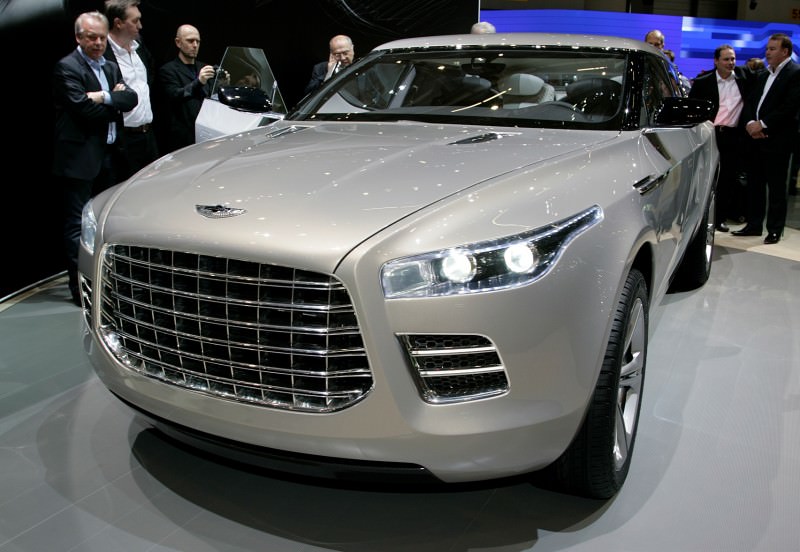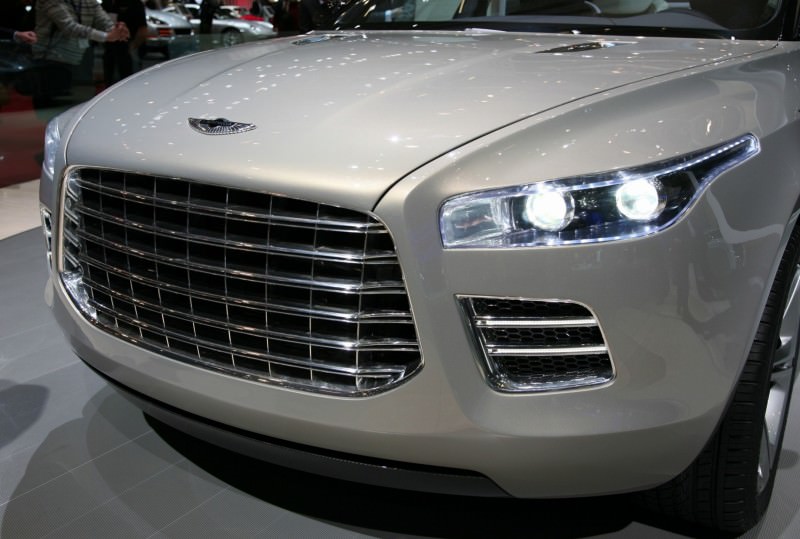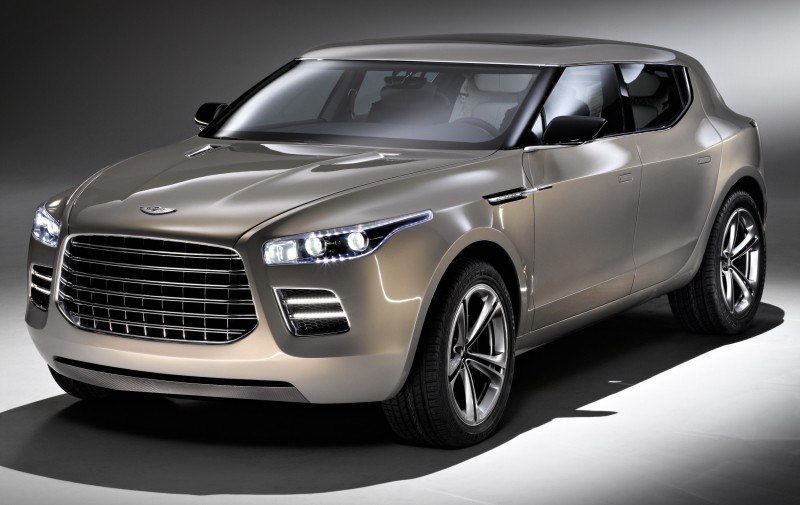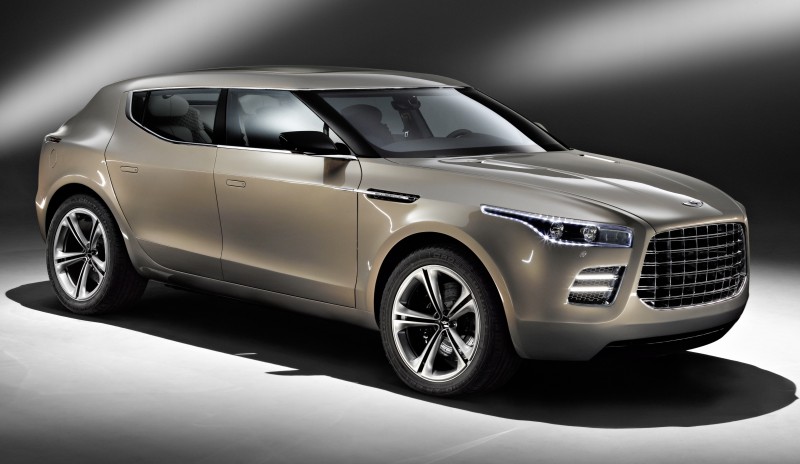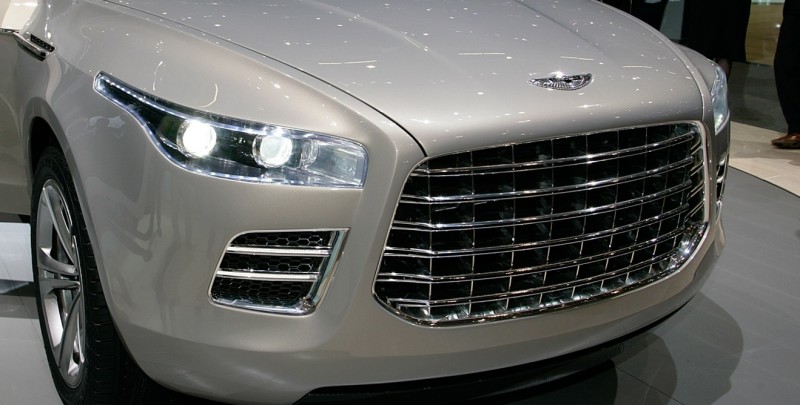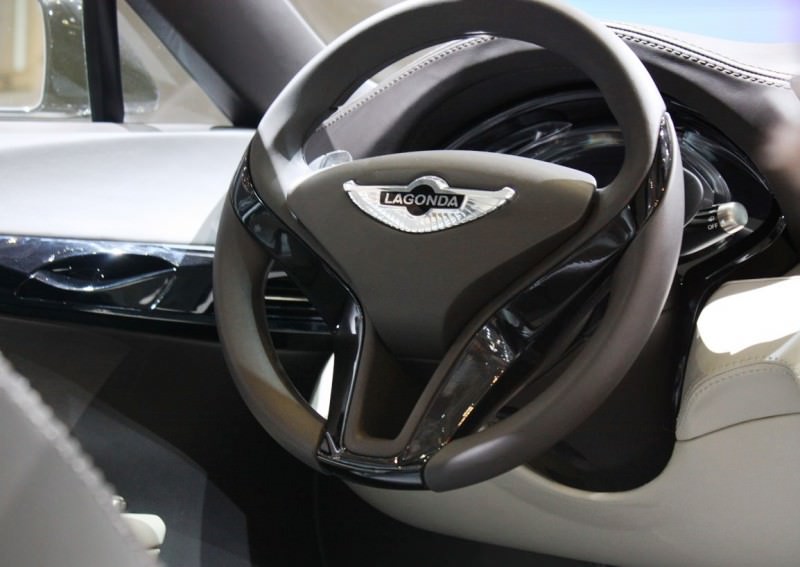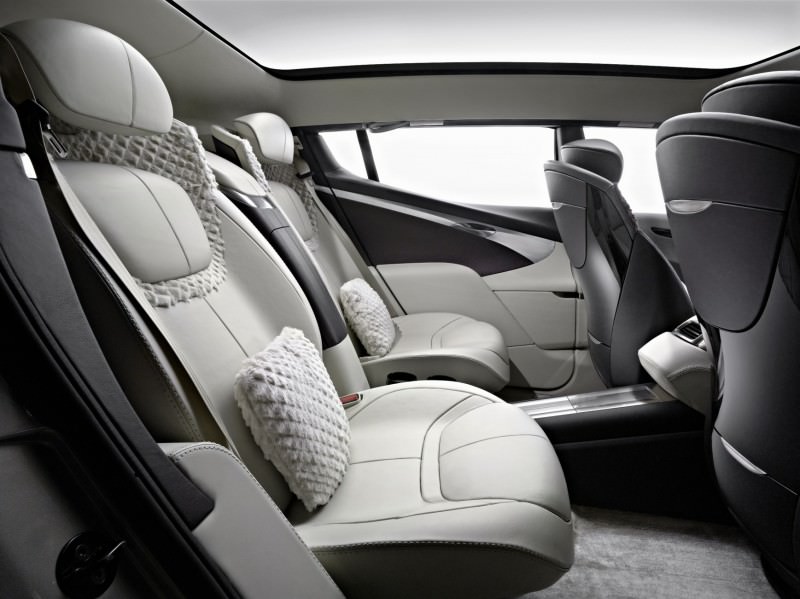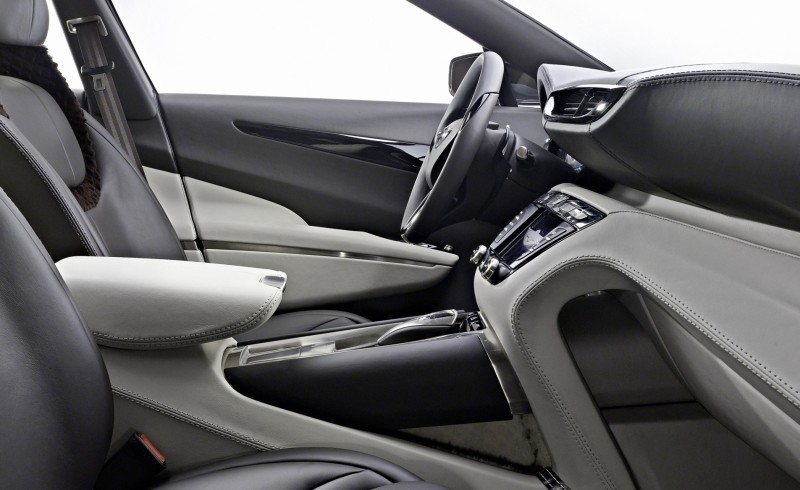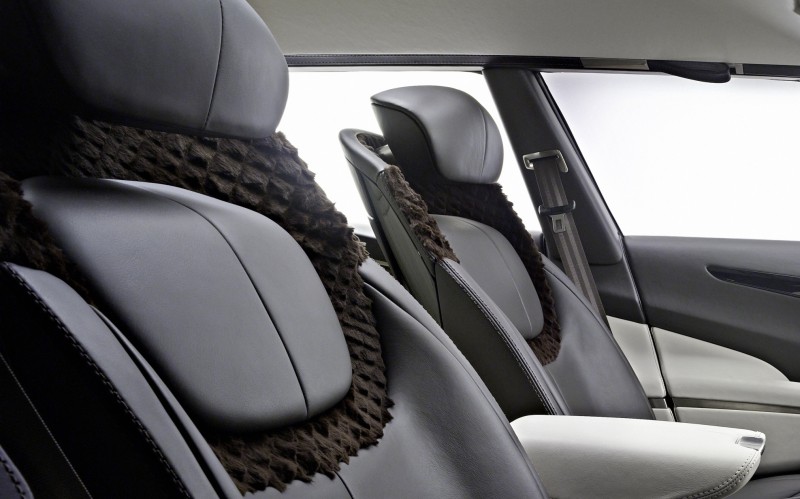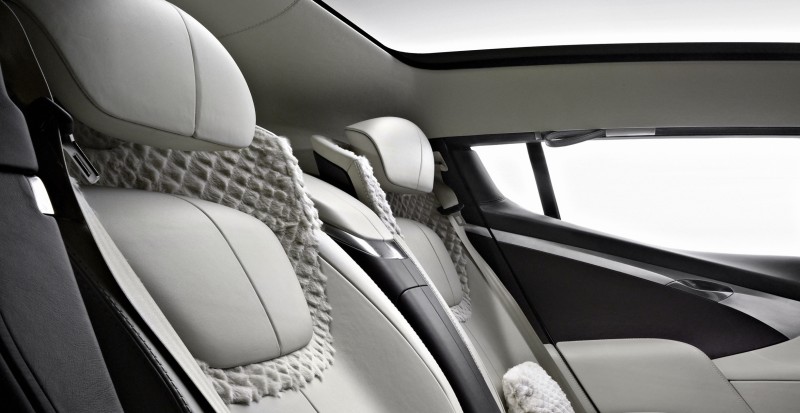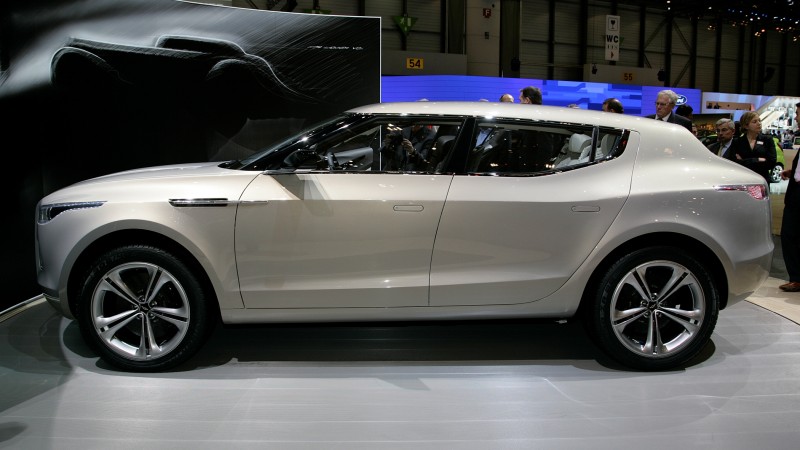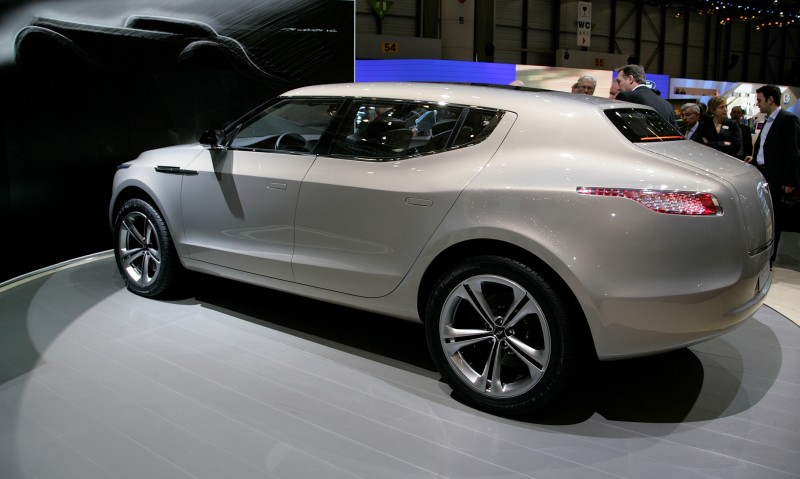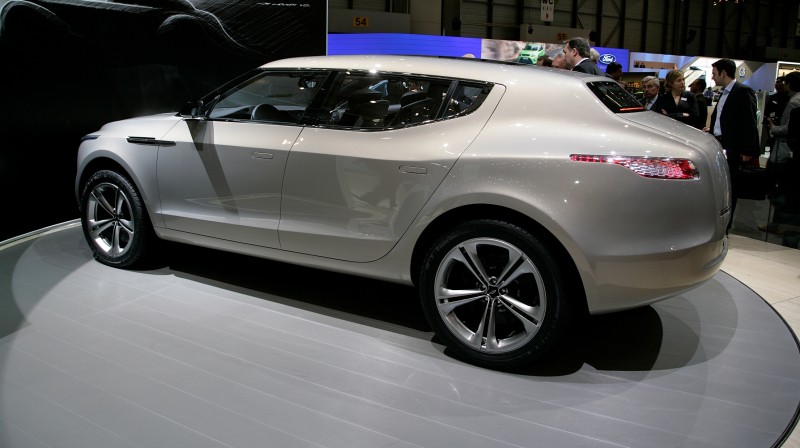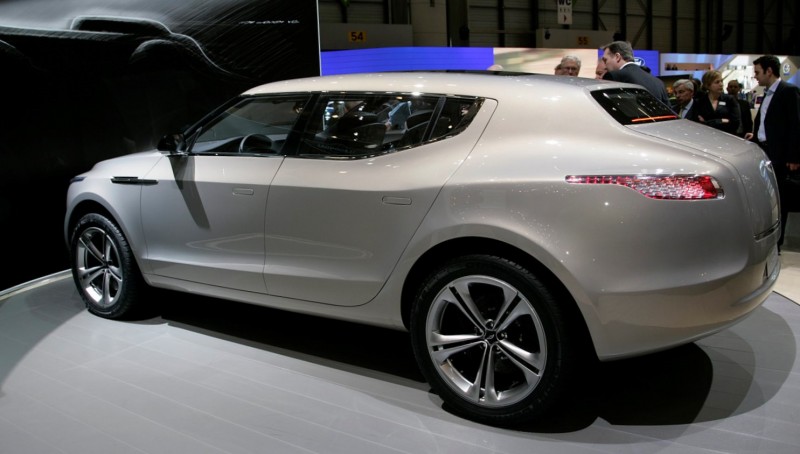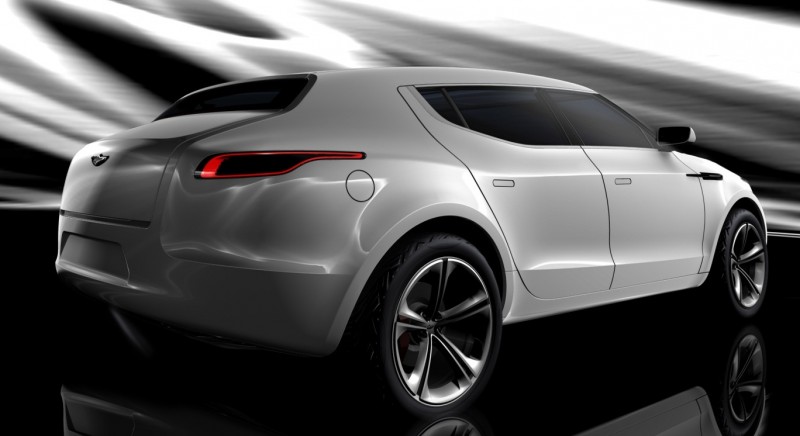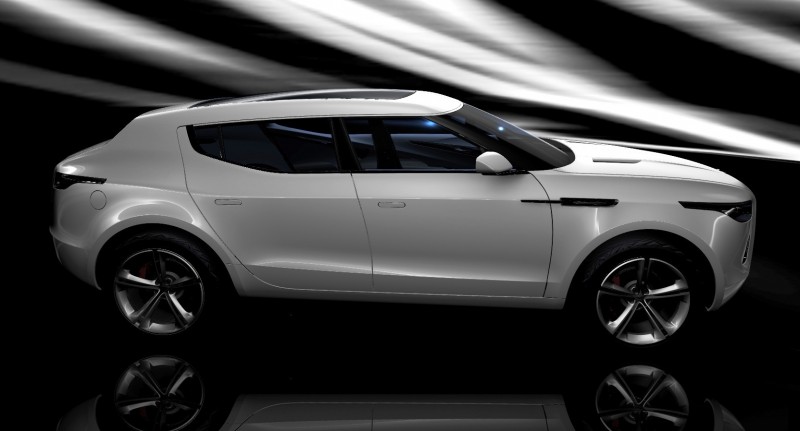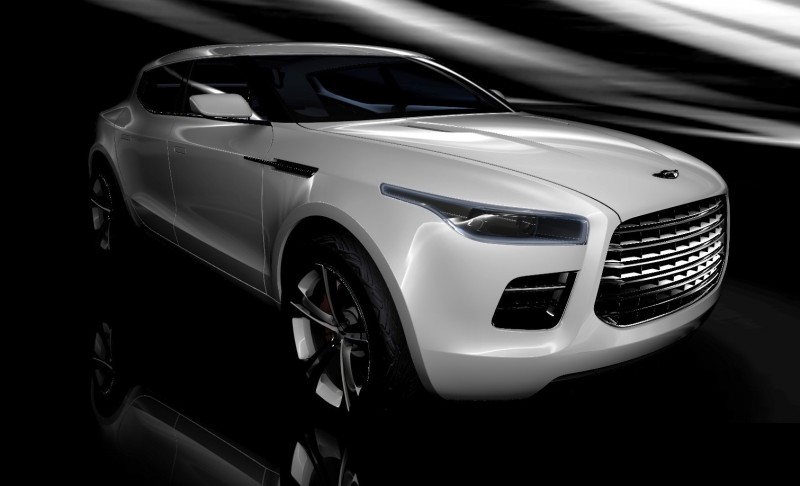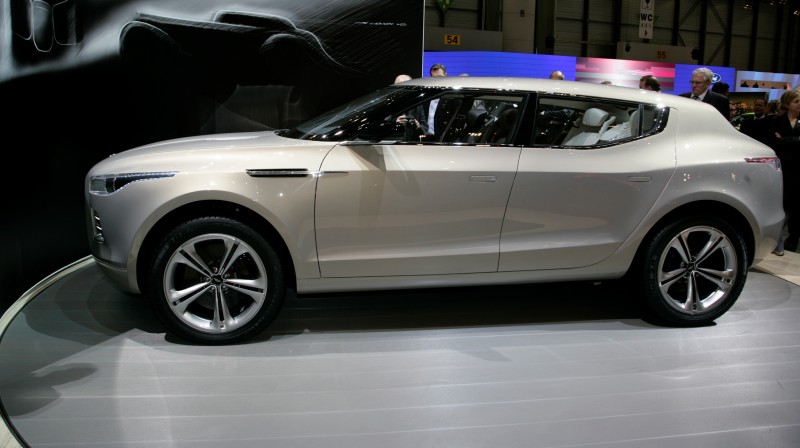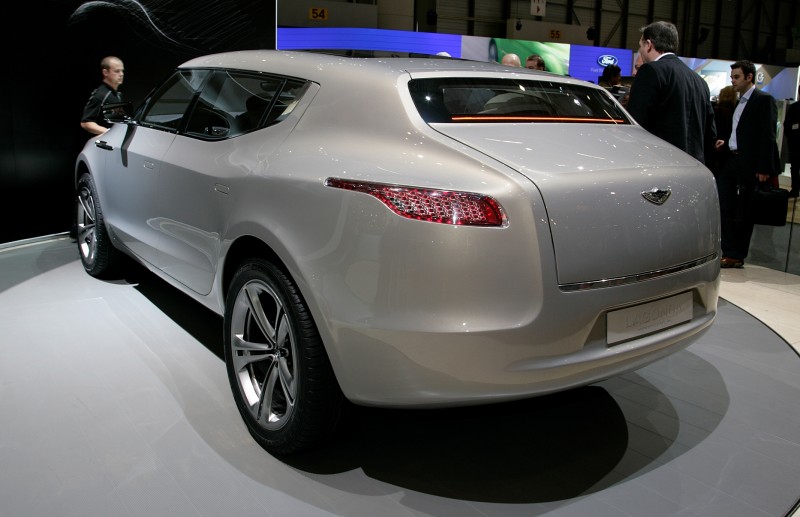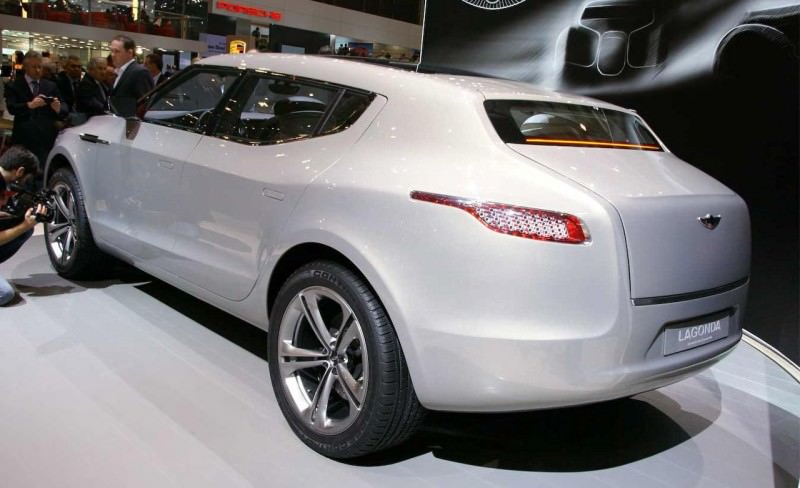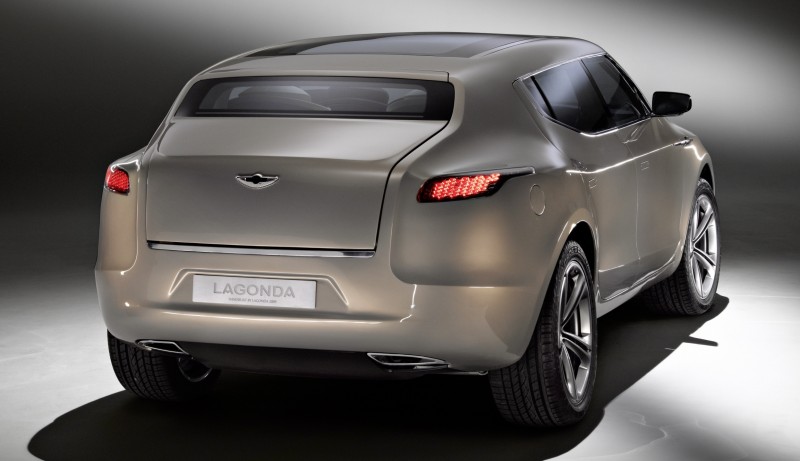The Aston Martin Lagonda SUV was easily the most-hated SUV concept of 2009 when it debuted. People absolutely hated it. They hated the design mostly, but fell back on SUV hate for extra emphasis.
The only other concept whose design has been so roundly hated was the Bentley EXP-9F — which required a full redesign, led to the re-assignment of the CEO who approved it, and ultimately pushed the production Bentley SUV debut back at least three years.
What do these two hated SUVs have in common?
— Long-history sports-car brands’ first attempts to move into the crossover market segment
— Comically retro styling elements that are extremely hideous (the nose for the Bentley, the tail for the Lagonda SUV.)
— Both would have likely been big sellers, despite some style woes.
So what was so reviled about the Lagonda SUV concept? Certainly not the pedigree that comes that that legendary name.
Many found the nose the be ghastly and the grille’s eggcrate elements too large to be a classically beautiful design.
The cabin is lovely and ultra-luxurious, with seating and a floating instrument panel that shows how fresh Aston Martin designs can be when given a clean sheet of paper from which to work.
The four-seat layout of the cabin is also very timely, with many of the likely buyers in Asia preferring this layout to a standard three-seat bench. The flowing and wrap-around windshield and glasshouse is also quite elegant, with large rear doors and a giant D-pillar providing privacy and a sense of security for occupants.
That brings us to the tail. Easily the worst part of the design, this retro element is the hardest to digest in the 21st-century. The bustle rear is a direct link to the Lagonda limousines of the 1930s to the 1950s, but illustrates how retro designs must not become caricatures of old classics. With this rear end and its tiny rear window, the Lagonda SUV was deemed impractical and a bit cartoonish by many. No owners would want to spend $300,000 to have the silhouette of a cartoon car out of DuckTails, would they?






Hard to say. The Rolls-Royce Phantom’s silhouette avoids this derision, despite being even more retro in many ways than the Lagonda concept’s design.
So, the cabin was lovely. The market was ready and clamoring for SUVs, and the tail only needed modest fixes to make it less of an eye-sore.
This brings us to the true reason for the Lagonda’s demise: the Rapide.
Initially a 2005/2006 concept car, the Rapide had just entered production for the 2009/2010 model year — with huge expectations for it to succeed. A dedicated line in a factory in Austria would assemble to Rapide in volumes not do-able in Gaydon or Newport Pagnell, but the Rapide flamed out dramatically.
Initial deposit-makers backed out of the Rapide purchase during the global economic crisis, and Ford itself had just divested Aston Martin to Kuwaiti Investment DAR. The combined management shuffle and cash-flow crunch meant Aston Martin desperately needed the Rapide to bring in over 2000 units in its first year of sales. Many hoped the car would actually sell more like 4,000 units annually, but that was not the case whatsoever.







The Rapide fell far, far short of those goals in the 2010 calendar year, where sales peaked at about 1250 units. Taking a huge loss on the Austrian Magna Steyr production agreement meant the Rapide was sucking budget from all other projects. At the same time, DB9 sales were falling fast and being cannibalized by the new V8 Vantage.
Production was halted briefly in May 2011 in Austria and the Rapide line was returned to England and prices rocketed upwards.
The Rapide and its successor, the Rapide S, now amount to sales of below 1000 units annually — very few of which are in the bouyant Middle East or Asian markets.
In conclusion, the design of the Lagonda SUV was not the biggest impediment to production. The project was imperiled by harsh realities of production engineering, limited distribution and macroeconomic issues beyond its control. If Aston had pushed the Lagonda SUV forward, it would carry a price in a $350,000 range and run a V12 engine — both of which would dramatically limit its ability to pay for its own investment.
With a price of $150,000 and forced-induction engines, the Lagonda SUV may rise again in the future. A platform and tech-sharing deal with Mercedes-AMG may help revive the idea for the 2018 or 2019 model year.
But one thing is certain: it will not look like this.
2009 Aston Martin LAGONDA SUV Concept
LAGONDA: REVIVAL OF A LUXURY BRAND
04/03/09
Aston Martin is proud to announce the return of Lagonda, one of the oldest and most iconic names in luxury car manufacturing.
The revival of Lagonda fulfils a long-term vision and will bring performance luxury into new markets and territories around the world for Aston Martin Lagonda. Ultimately, Lagonda will be a strong presence in 100 global territories, vastly increasing the global brand reach of the company and extending to new customers.
Reflecting its remarkable history, the brand will return to Russia, enter emerging markets in the Middle East, South America, India and China, as well as responding to demand from the dynamic, innovation-focused consumers of Europe, North America and the Far East.
‘The Lagonda is the luxury car of the future,’ says Aston Martin Lagonda Chief Executive, Dr Ulrich Bez, ‘a combination of total usability, a new form and innovative new technology and materials.’
Lagonda is committed to innovative new propulsion technologies, new materials and elegant forms, creating a functional luxury for the near future. Critically, the brand will allow the exploration of alternative powertrain solutions including flexfuel, low emission diesel and hybrid systems. Lagonda will epitomise the intersection of craft, design and technology with Aston Martin’s established high performance expertise.
The intention is for Lagonda to enter the market place with a unique performance avant-garde luxury product, a vehicle that combines exceptional ability with unsurpassed elegance, inside and out. The LAGONDA CONCEPT is a powerful four-wheel drive, four-seater car that will satisfy the most discerning and demanding owner.
‘An Aston Martin is an authentic, pure sports car,’ says Dr Ulrich Bez, ‘but Lagonda is something else, a new brand that will reach into new markets. Lagonda will create a new kind of customer relationship, instilling the spirit of travel, adventure and style into a single, formidable package.
‘An Aston Martin demands to be driven. A Lagonda demands a destination.’

Tom Burkart is the founder and managing editor of Car-Revs-Daily.com, an innovative and rapidly-expanding automotive news magazine.
He holds a Journalism JBA degree from the University of Wisconsin – Madison. Tom currently resides in Charleston, South Carolina with his two amazing dogs, Drake and Tank.
Mr. Burkart is available for all questions and concerns by email Tom(at)car-revs-daily.com.

